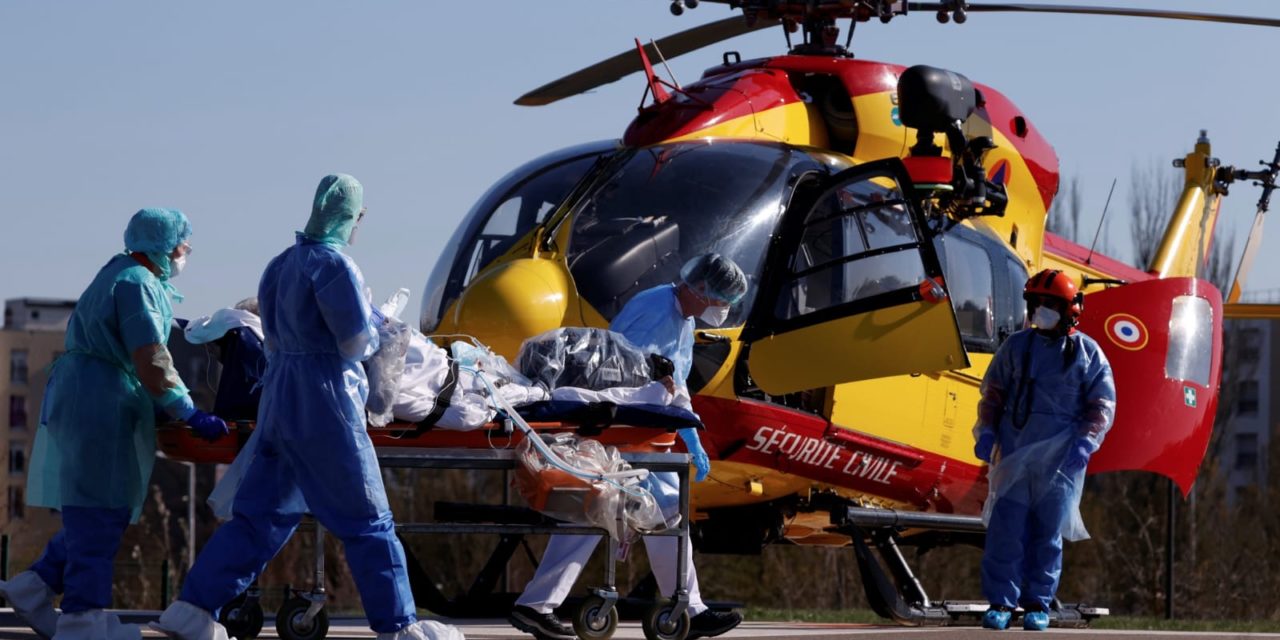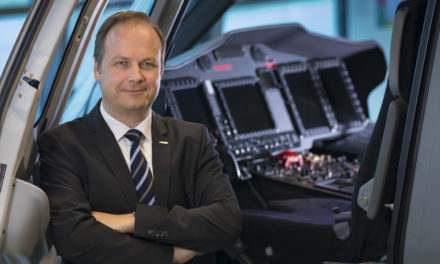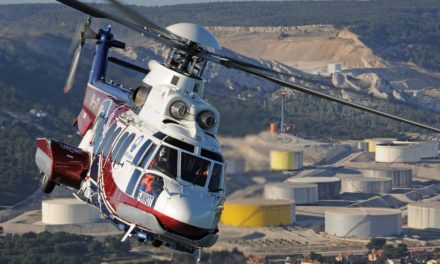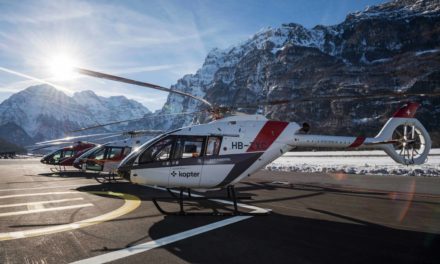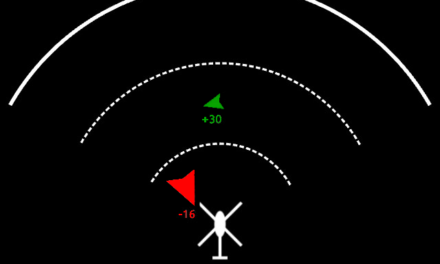By Fred Vergneres
Very discreet in the major French national media, Sécurité Civile was nevertheless the first to intervene in missions to transfer patients with COVID-19.
At the end of February, the helicopters Dragon 75 unit carried out the first medical evacuation for a patient infected in the Oise, who unfortunately died a few days later. This mission was carried out, even though the WHO had not yet qualified COVID-19 as a pandemic. “The data at the time was very random concerning the risks related to the epidemic. Therefore, at the completion of the first mission, the command ordered a quarantine of the crew, whose screening fortunately proved to be negative,” said the spokesman for the Sécurité Civile. Moving ahead, they would be the first heliborne unit to be called upon because of its daily experience and its ability to carry out such missions, as the spokesman emphasizes once again: “Unlike the army helicopters, which require an adaptation of the cargo bay layout for medical transport, the Sécurité Civile EC145s are already planned to receive a configuration with specific medical equipment, in particular for the transfer of patients suffering from serious pathologies. Moreover, the cargo compartment is perfectly autonomous, and there is no electronic interaction between the cabin and the cockpit. Our aircraft have been designed from the outset to carry out several missions, including the vital mission of medical evacuation”. In addition to its first intervention in the Oise at the beginning of the epidemic and before the crisis developed in the East, Sécurité Civile had already gone to the front by intervening in French Guiana on the cluster of Saint-Laurent du Maroni in order to carry out transfers to Cayennes.
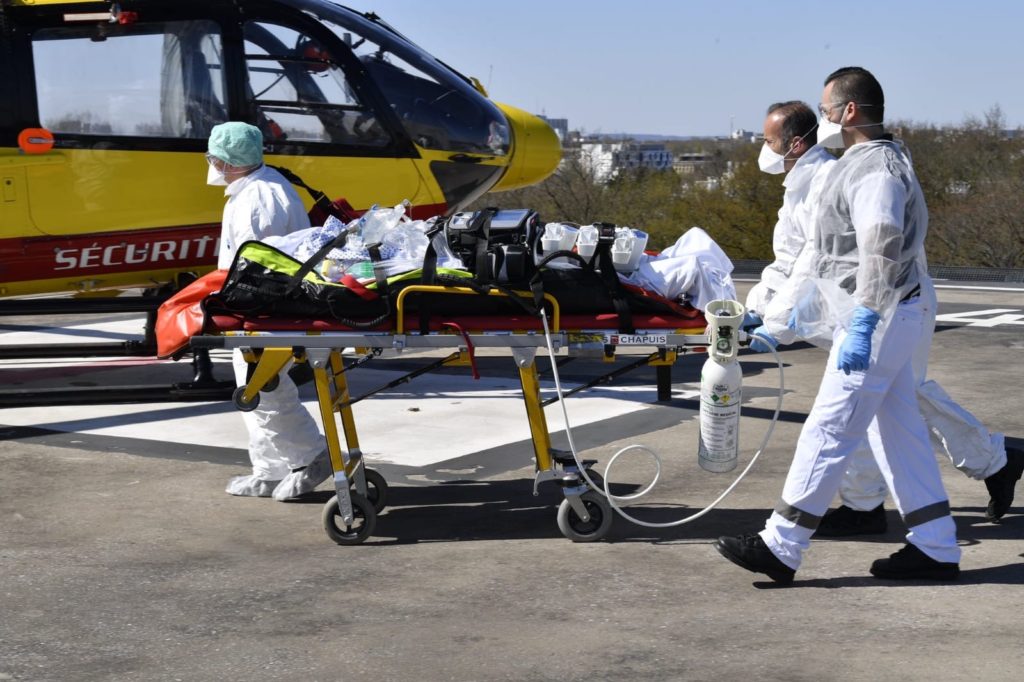
Grand Est district
Since the beginning of the confinement, the Dragons of Grand Est district units based in Strasbourg and Besançon have been particularly solicited. They had to respond very quickly to the first requests for inter-hospital transfer missions in order to relieve congested hospitals in the region. These were first-rate missions, which did not, however, escape certain conflicts between the various administrations concerned. Paradoxically, solidarity and teamwork do not always seem to be appropriate in an emergency context. Despite these few pitfalls, the missions proved particularly intense in this region for the two helicopters, which had to call on a third machine from Haute-Savoie, as the Sécurité Civile command emphasised: “Following the confinement, activity in the mountains was almost nil, which enabled us to disengage a helicopter from Haute-Savoie to the Grand Est plot. Today, the fleet in the area has three helicopters, and the possibility of a fourth, if necessary“.
Second wave
Extremely connected with the Eastern sector, Sécurité Civile also had to deal with the first interventions in the Paris region. These transfers, which begun on March 29th, have helped to relieve congestion in certain Parisian hospitals, to those in the Tourangelle and Indre-et-Loire regions. As with previous COVID missions, procedures remain strict during flights, including suitable equipment for the crews (waterproof gowns, masks…) even when they are returning from missions. Some units have reinforced their measures, such as Dragon 20 based in Ajaccio, which has installed plastic protection to isolate the cockpit from the cargo, thus helping to limit the risks of contamination during COVID-19 transfers. The disinfection protocol for both crews and machines is particularly strict and can take several minutes.
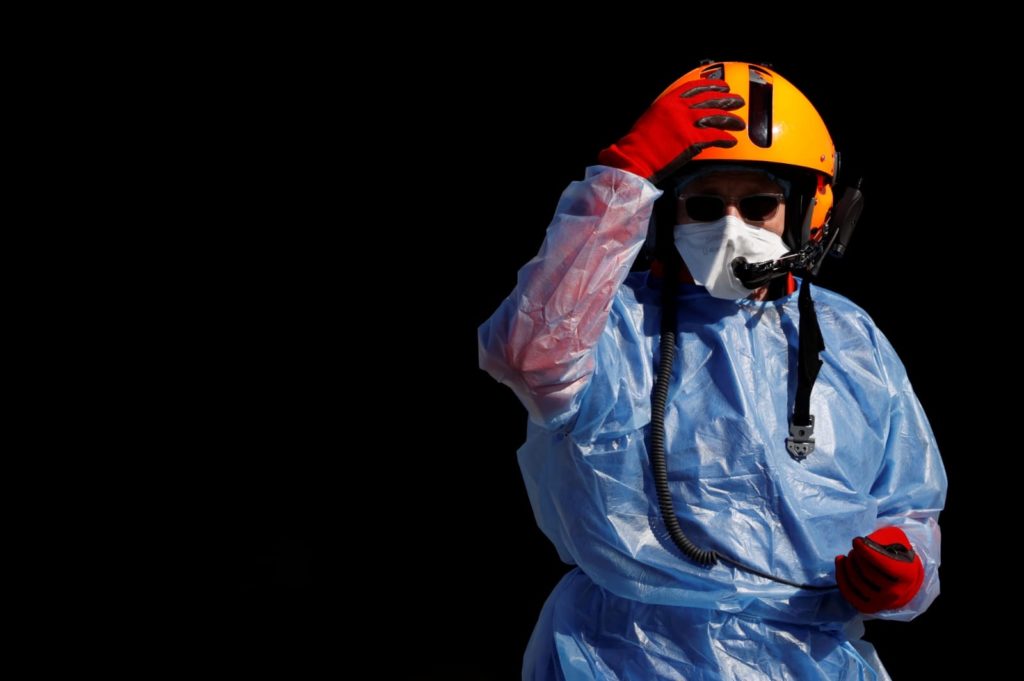
Despite a spike in the epidemic, which does not seem to have reached a peak point according to the authorities, the Dragon 75 site at Issy Les Moulineaux could nevertheless accommodate new machines. “But nothing is set in stone,” said the spokesman. The daily management of helicopters is being carried out by the SAMU, according to the needs and regions, but also based on the availability of an aircraft, whether it’s operated by the Sécurité Civile, the SAMU, the ALAT – Light Aviation Army, or the Air Force. In order to plan flights, the Sécurité Civile staff and the different heliborne units, such as: the SAMU, the Army, and recently the Air Force, should evaluate and determine the different hypotheses concerning the distribution of helicopters, along with the possible reinforcements needed at certain locations throughout the hexagon, according to the spread of the virus.
The Dragons recorded their 100th mission on March 29th, proving their effectiveness. And, the number of operations of this type, across the across the territory, has not weakened. According to the Sécurité Civile spokesman, an average of eight to twelve flights a day are now conducted for patients suffering from COVID-19 throughout the territory. In total, more than 180 hours have been logged in the last 15 days for this mission alone. And, the pace of crews is not slowing down. In fact, the staff says, they have to “readjust the workload of the crews and maintenance mechanics according to their needs.” For the moment, according to the spokesman of the entity, “The objective is to last throughout the period, and maintain our crews’ condition, in order to preserve them as long as possible.” An objective that we hope will be sustainable, as we cannot forget those hidden units during the daily national applause to say thank you.

